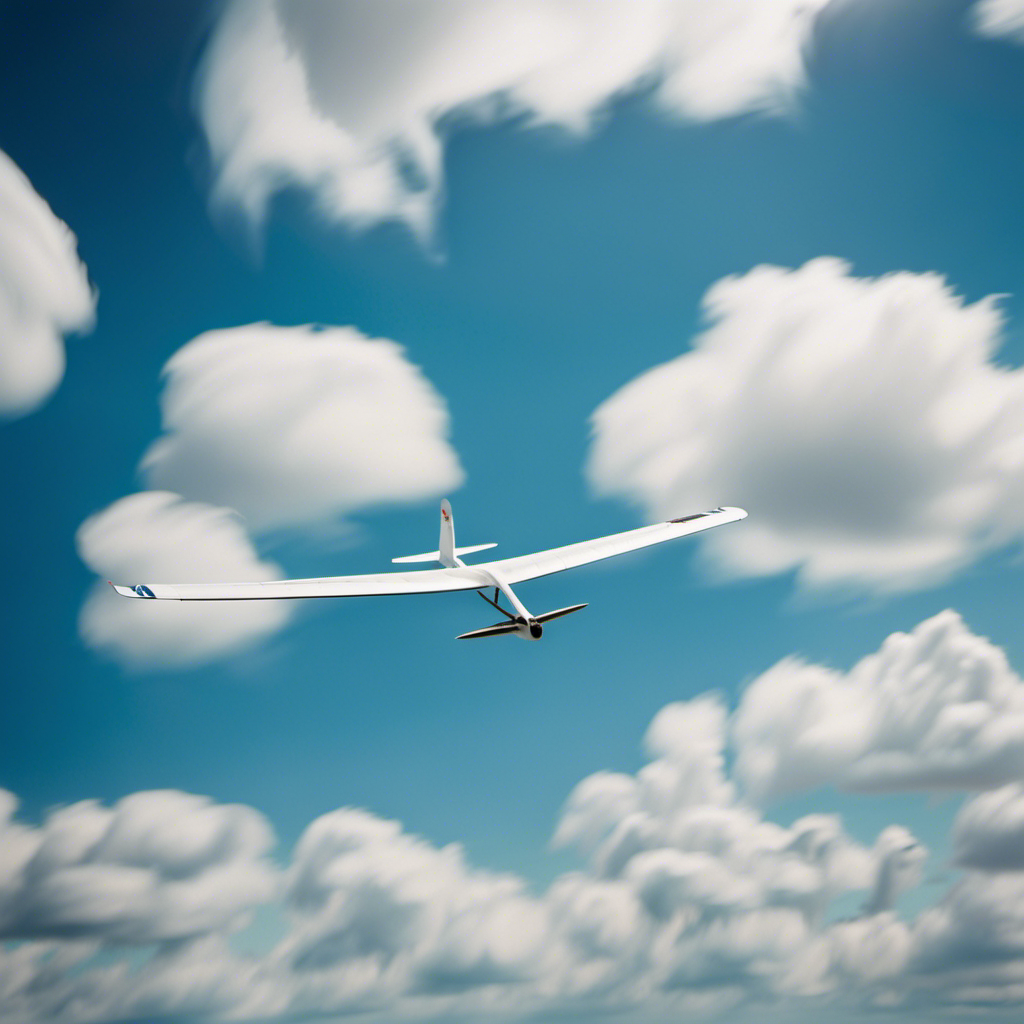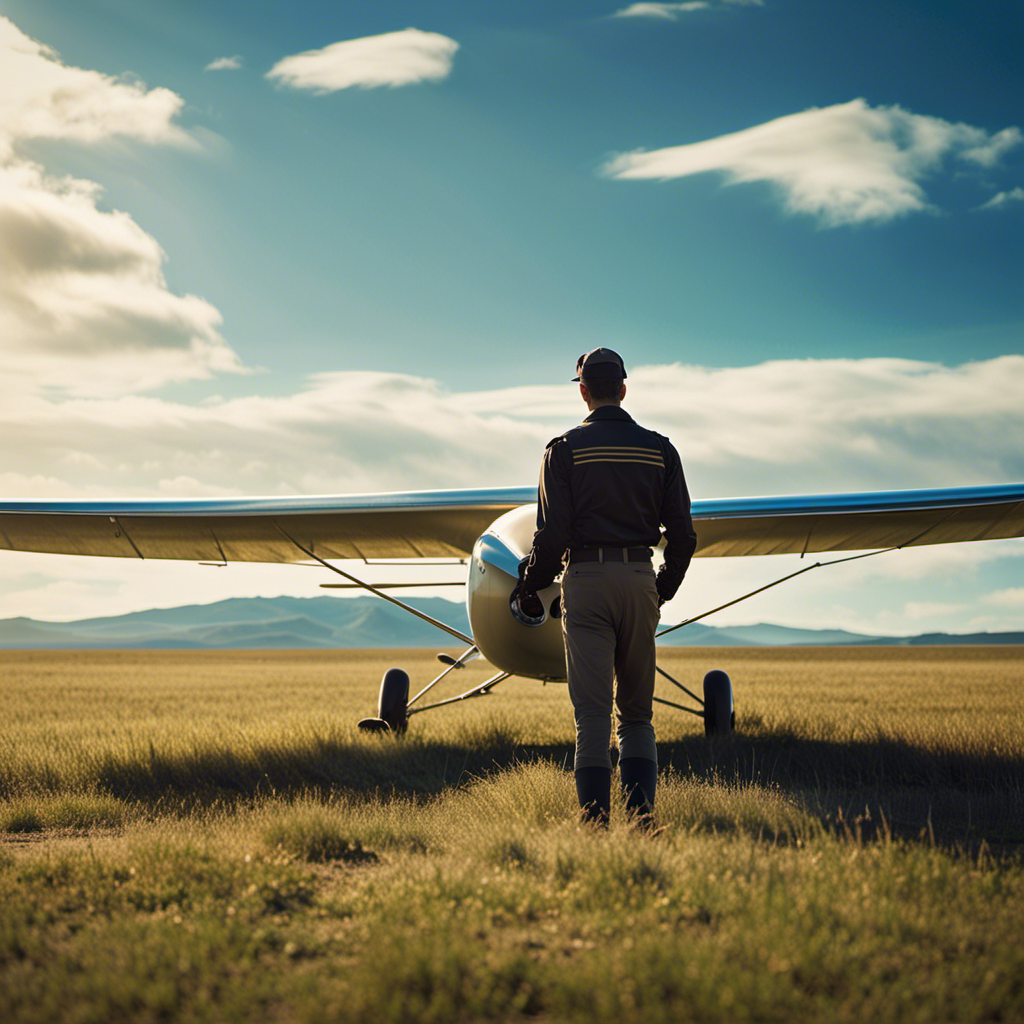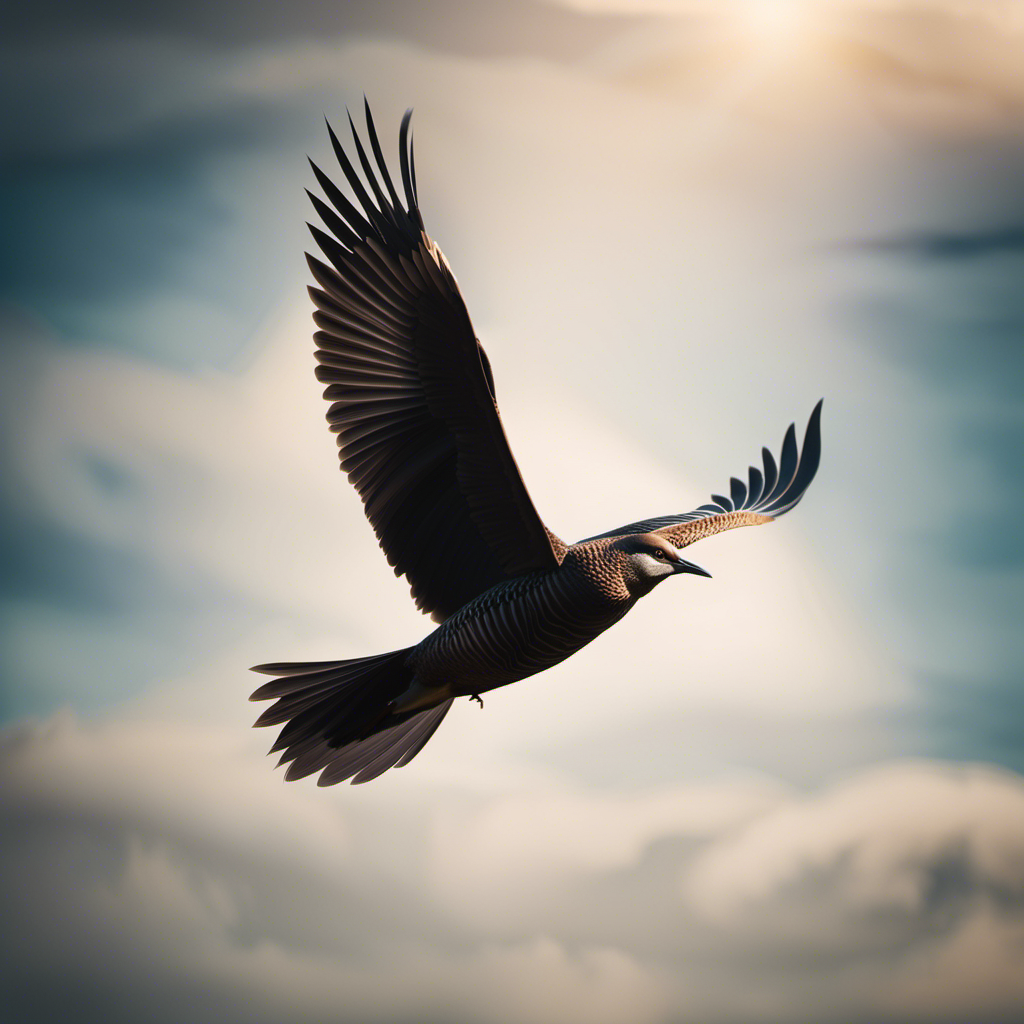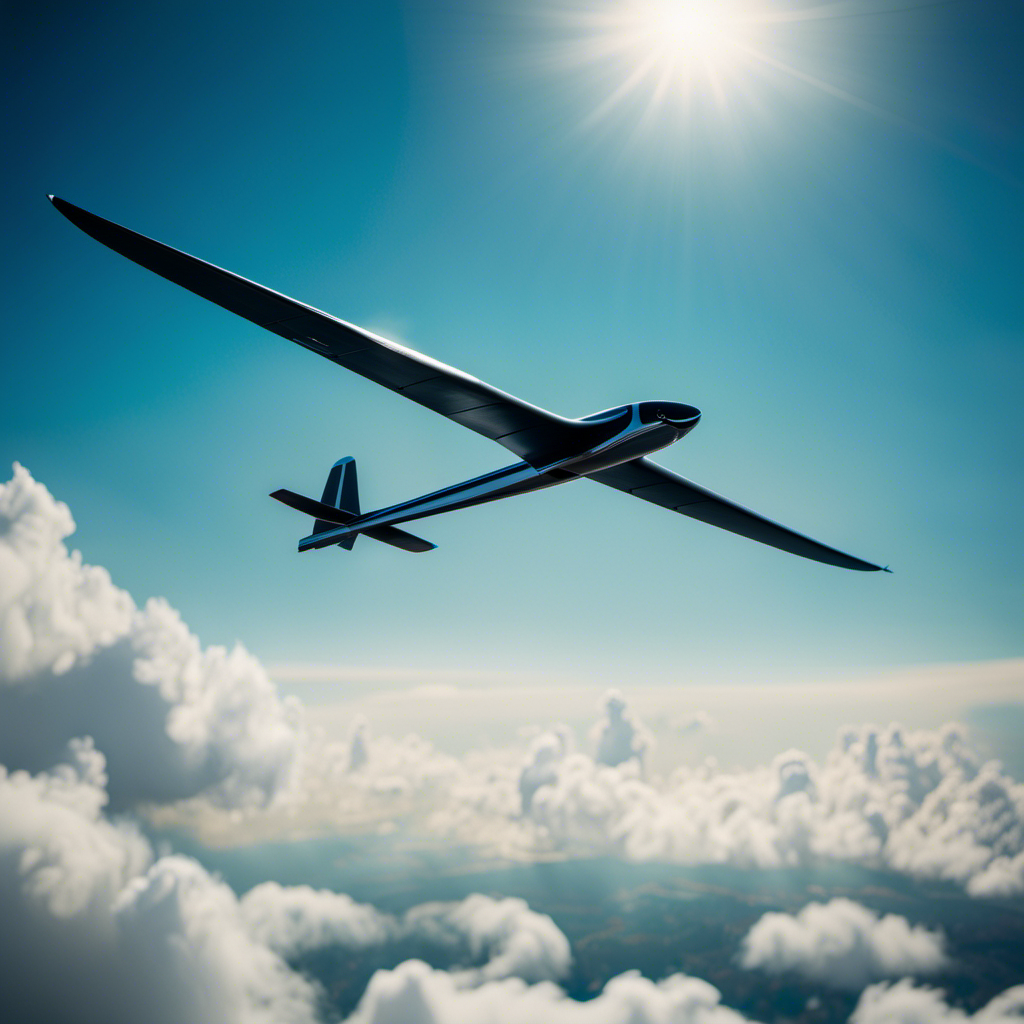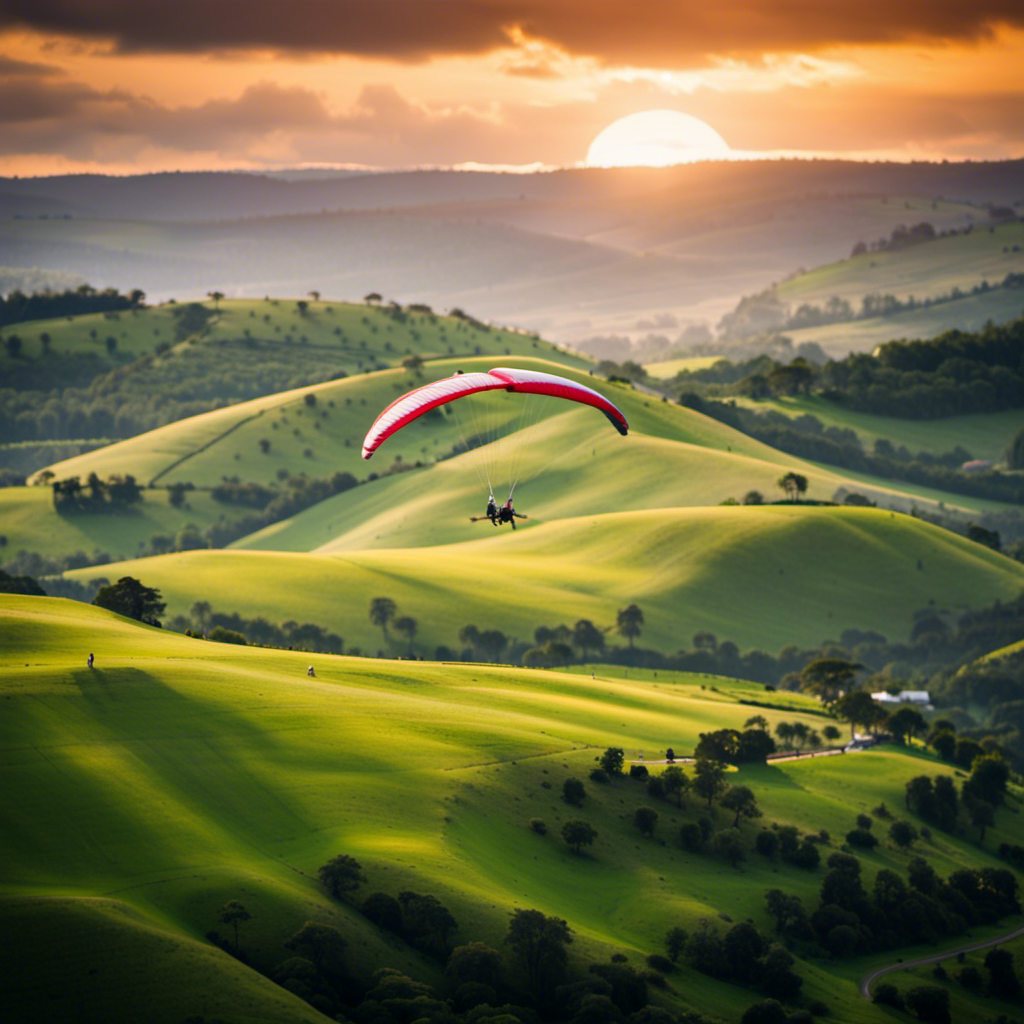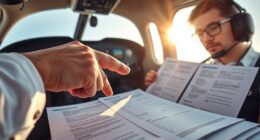As I soar through the sky, I am amazed by the immense distances I can travel without the need for an engine. This makes me wonder: what is it that enables gliders to cover such incredible distances?
In this article, we will delve into the fascinating principles behind glider flight. By understanding the power of lift and drag, the role of gravity, and the importance of control and technique, we will uncover the secrets of glider performance.
Join me on this journey as we explore the incredible world of glider technology and the possibilities it holds for the future.
Key Takeaways
- Center of Gravity (CG) position and weight distribution play a crucial role in glider performance and affect stability, maneuverability, climbing efficiency, and glide ratio.
- Aerodynamic design, including the shape of wings, fuselage, and control surfaces, is essential for maximizing glider performance by minimizing drag and maximizing lift.
- Skilled pilots can optimize glider performance by analyzing wind patterns, exploiting air currents, making precise control inputs, and mastering techniques to minimize drag.
- Advancements in glider technology, such as the use of advanced composite materials and streamlined wing designs, have the potential to revolutionize glider flight for longer distances and increased endurance.
Understanding the Basic Principles of Glider Flight
Glider flight is possible due to the basic principles of aerodynamics. In order to understand how gliders are able to fly, it is important to grasp the concept of lift generation and glider aerodynamics.
Lift is the force that opposes gravity and allows the glider to stay airborne. It is generated by the flow of air over the wings, creating a pressure difference between the upper and lower surfaces. This pressure difference creates an upward force that supports the weight of the glider.
Glider aerodynamics refers to the study of the forces acting on a glider in flight, including lift, drag, and weight. By understanding these principles, we can harness the power of lift and drag to maximize the distance traveled by gliders, without the need for an engine.
Harnessing the Power of Lift and Drag
Using the principles of lift and drag, gliders are able to travel impressive distances. To harness lift effectively, gliders are designed with wings that create a pressure difference between the upper and lower surfaces, generating upward force. This allows the glider to stay airborne and counteract the force of gravity.
Managing drag is equally important, as it determines the glider’s speed and efficiency. Gliders minimize drag by streamlining their shape, reducing surface area, and using smooth, aerodynamic surfaces. Additionally, pilots play a crucial role in managing drag by making precise adjustments to the glider’s control surfaces, such as flaps and ailerons. These adjustments help optimize the balance between lift and drag, allowing the glider to maintain maximum glide performance.
Understanding how to harness lift and manage drag is essential for achieving long-distance glider flights.
Exploring the Role of Gravity in Glider Flight
By effectively managing lift and drag, gliders are able to overcome the force of gravity and achieve impressive flight distances. Gravity’s effect on a glider’s trajectory is crucial in understanding how these aircraft stay aloft.
Gravity constantly pulls the glider downwards, acting as a force that counteracts the lift generated by the wings. This downward force causes the glider to lose altitude over time, creating a gradual descent. However, skilled glider pilots are able to exploit this force by using it to their advantage.
By carefully managing the glider’s pitch and angle of attack, pilots can control the rate of descent and maintain a desired glide path. Understanding gravity’s effect on glider flight is fundamental in mastering the art of soaring.
Transitioning into the subsequent section, controlling the glide requires precise adjustments using ailerons, elevators, and rudder.
Controlling the Glide: Ailerons, Elevators, and Rudder
To control the glide effectively, you’ll need to make precise adjustments using the ailerons, elevators, and rudder. The ailerons, located on the trailing edge of the wings, are responsible for controlling the roll of the glider. By moving the ailerons up and down, you can adjust the bank angle and therefore the direction of the glider. The elevators, located on the horizontal stabilizer, control the pitch of the glider. By moving the elevators up and down, you can adjust the angle of attack and therefore the lift generated by the wings. Finally, the rudder, located on the vertical stabilizer, controls the yaw of the glider. By moving the rudder left and right, you can adjust the direction the glider is facing.
| Control Surface | Function |
|---|---|
| Ailerons | Roll |
| Elevators | Pitch |
| Rudder | Yaw |
These control surfaces work together to provide the pilot with the ability to maneuver the glider in the air. The effectiveness of the ailerons and elevator control is crucial in maintaining stability and control during the glide. The pilot must make precise adjustments using these control surfaces to maintain the desired flight path and make any necessary corrections. By understanding the aerodynamic principles and the role of each control surface, the pilot can optimize the glider’s performance and ensure a smooth and controlled flight.
Transitioning to the subsequent section, exploiting thermals and updrafts for extended flight, involves utilizing natural air currents to gain altitude and prolong the glide.
Exploiting Thermals and Updrafts for Extended Flight
Transitioning to exploiting thermals and updrafts for extended flight involves taking advantage of natural air currents to gain altitude and extend the glide. It’s fascinating how gliders can harness these atmospheric phenomena to achieve remarkable distances. Here’s how it works:
-
Exploiting thermal gradients:
Thermals are columns of rising warm air created by the sun heating the earth’s surface unevenly. Glider pilots search for these thermals using visual cues like cumulus clouds and birds soaring high. -
Utilizing ridge lift:
Ridge lift occurs when wind encounters an obstacle, such as a hill or mountain, and is forced upward. Glider pilots fly close to these ridges, using the upward wind to gain altitude and sustain their flight.
By understanding and utilizing these natural air currents, glider pilots can extend their flight and cover great distances.
This brings us to the next section, where we’ll explore the art of energy management in gliding.
Mastering the Art of Energy Management
You can maximize your gliding potential by mastering the art of energy management. Energy conservation plays a crucial role in flight optimization, allowing you to stay aloft for extended periods.
To achieve this, it’s essential to understand the different sources of energy available during gliding. Thermals, updrafts, and ridge lift are all valuable sources that can be harnessed to gain altitude and maintain flight. By carefully monitoring and exploiting these energy sources, you can conserve your glider’s momentum and increase your overall flight distance.
However, energy management is not just about finding and utilizing lift. It also involves making efficient decisions regarding speed, altitude, and glide ratio to ensure optimal performance throughout your flight.
Understanding the role of weight and balance in glider performance is the next crucial step.
The Role of Weight and Balance in Glider Performance
Achieving optimal glider performance relies heavily on maintaining the proper weight and balance throughout your flight. Weight distribution plays a crucial role in determining a glider’s performance effects. Here are four key factors that highlight the importance of weight and balance in glider performance:
- Center of Gravity (CG) position affects stability and maneuverability.
- Weight distribution impacts the glider’s ability to climb and descend efficiently.
- Excessive weight can reduce the glider’s glide ratio, resulting in shorter flight distances.
- Proper weight and balance ensure safe and predictable flight characteristics.
Understanding and managing weight distribution is vital for maximizing glider performance. By maintaining the correct weight and balance, pilots can achieve greater efficiency and control in their flights. This sets the stage for the subsequent section on achieving maximum efficiency with aerodynamic design, where we will explore further enhancements for glider performance.
Achieving Maximum Efficiency with Aerodynamic Design
After understanding the crucial role of weight and balance in glider performance, let’s delve into the next aspect that contributes to the remarkable distance gliders can cover: achieving maximum efficiency with aerodynamic design.
When it comes to gliders, every tiny detail matters. The shape of the wings, the sleek fuselage, and even the position of the control surfaces can significantly impact the glider’s performance. Engineers and designers meticulously analyze and refine these elements to optimize every aspect of the glider’s design.
By minimizing drag and maximizing lift, the aerodynamic design of a glider allows it to soar through the air with minimal energy expenditure. From reducing airframe drag to fine-tuning the wing shape, every effort is made to ensure the glider operates at peak efficiency. This meticulous attention to detail maximizes the glider’s potential for long-distance flight.
Transitioning to the subsequent section, the importance of pilot skill and technique becomes evident in harnessing this potential.
The Importance of Pilot Skill and Technique
When it comes to flying gliders, pilot skill and technique play a crucial role in harnessing the maximum potential of the aerodynamic design. Through extensive pilot training, we learn to understand and exploit wind patterns to our advantage.
By analyzing the wind speed, direction, and other meteorological factors, we can make informed decisions to optimize our flight path and maximize our glider’s performance. Skilled pilots have a keen sense of the air currents and can navigate them effectively, allowing the glider to stay aloft for extended periods.
Moreover, precise control inputs and smooth maneuvers are essential to minimize drag and maintain optimal glide ratios. By mastering these techniques, pilots can achieve impressive distances and durations in glider flights.
Looking forward, advancements in glider technology hold exciting possibilities for even greater accomplishments in the future.
Advancements in Glider Technology and Future Possibilities
With advancements in glider technology, you’ll be able to take advantage of more efficient designs and cutting-edge materials for enhanced performance and exciting possibilities in the future.
These advancements are revolutionizing the way gliders fly, allowing for longer distances and increased endurance.
One major advancement is the use of advanced composite materials, such as carbon fiber, which are lighter and stronger than traditional materials. This results in reduced weight and improved structural integrity, allowing for higher speeds and greater maneuverability.
Additionally, advancements in aerodynamics have led to the development of more streamlined and efficient wing designs, reducing drag and increasing lift.
These improvements in glider technology are not only enhancing current performance but also opening up new possibilities for future exploration and competition.
With continued advancements, the potential for even longer flights and greater achievements in glider flying is on the horizon.
Frequently Asked Questions
What are the different types of gliders used in aviation?
There are several types of glider designs used in aviation, each with its own unique characteristics. Advancements in glider technology have led to improved aerodynamics, materials, and control systems, allowing for longer and more efficient flights.
How long can a glider stay in the air without any external help?
The longest flight duration of a glider, without any external help, is determined by its glider endurance. Gliders can stay in the air for several hours or even days, depending on various factors such as weather conditions and pilot skill.
Can gliders fly at night or in adverse weather conditions?
Can gliders fly at night and in adverse weather conditions? What challenges do they face? Gliders can fly at night with proper lighting and instruments, but adverse weather conditions such as strong winds and storms can make it dangerous and difficult.
Are there any restrictions on where gliders can fly?
There are restricted areas where gliders cannot fly due to safety and security concerns. Glider regulations dictate the airspace and altitudes gliders can operate in, ensuring they do not interfere with other aircraft.
How do gliders land safely without engines or landing gear?
Glider landing techniques involve using specific methods to safely land without engines or landing gear. Safety measures during glider landings include utilizing air brakes, spoilers, and precise control inputs to control the descent and ensure a smooth touchdown.
Conclusion
In conclusion, the remarkable flight capabilities of gliders can be attributed to a combination of factors. These include harnessing lift and drag, understanding the role of gravity, and utilizing control surfaces such as ailerons, elevators, and rudder.
Additionally, skilled pilots can exploit thermals and updrafts to extend their flight time. The weight and balance of the glider, along with its aerodynamic design, play crucial roles in achieving maximum efficiency.
As technology advances, the possibilities for glider flight are endless. This opens up new horizons for exploration and innovation in this exhilarating sport.
